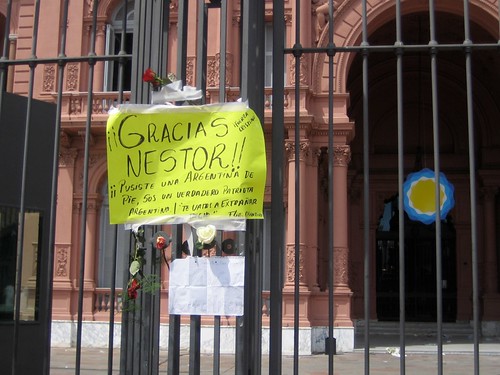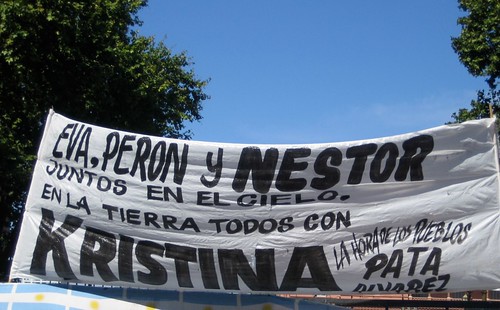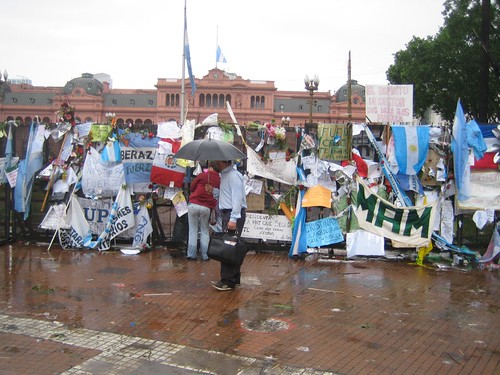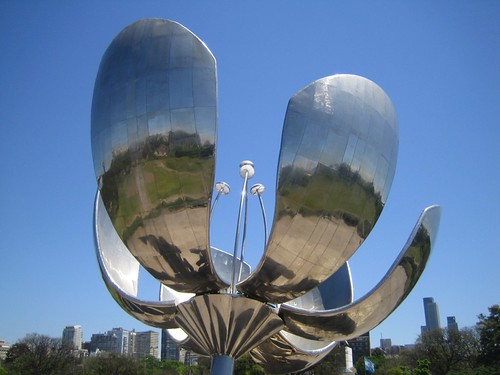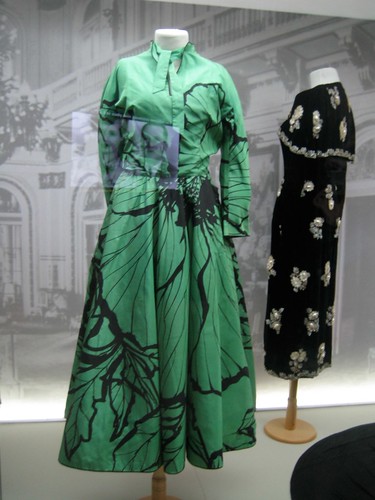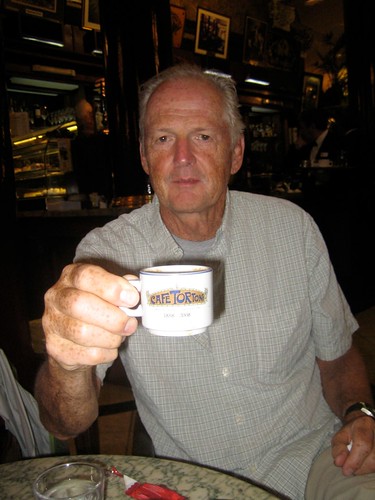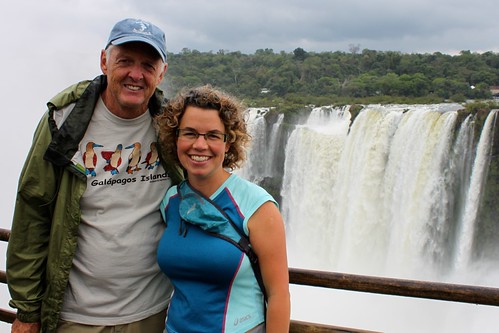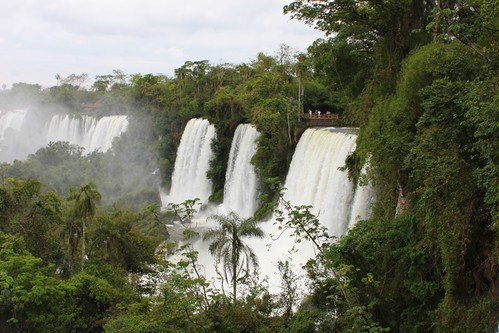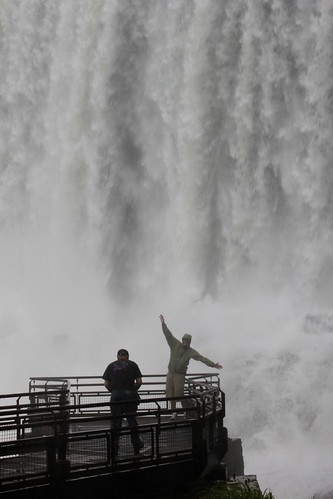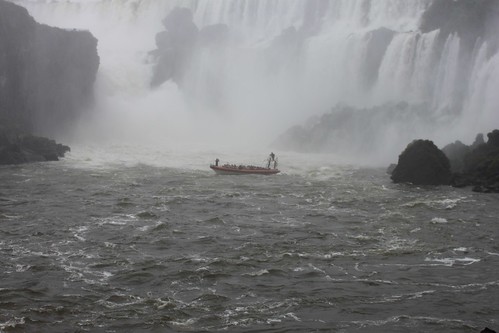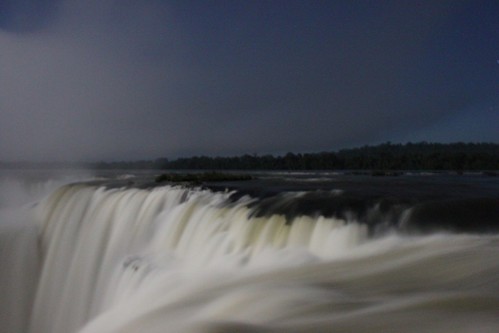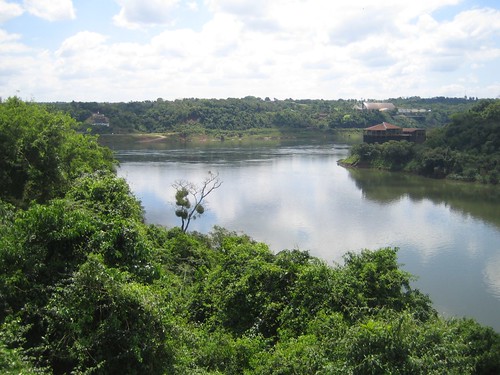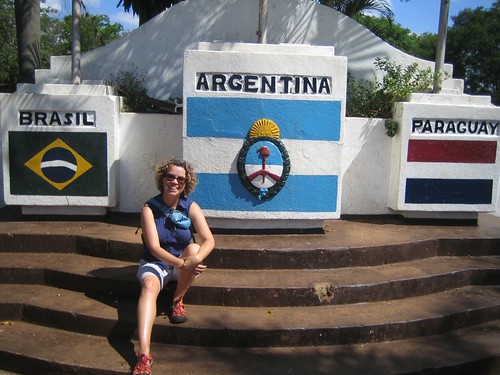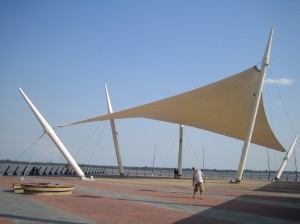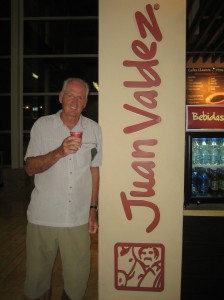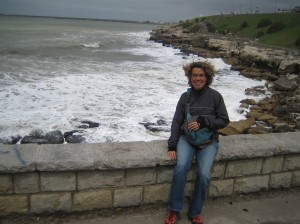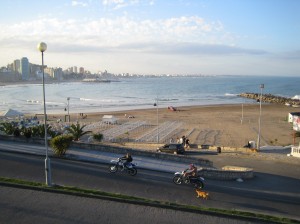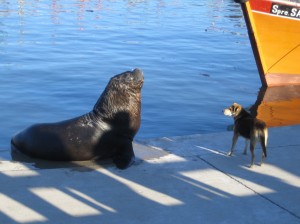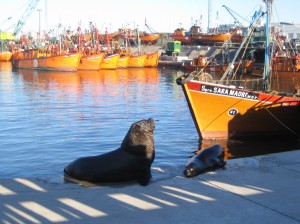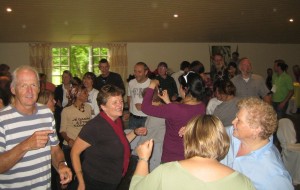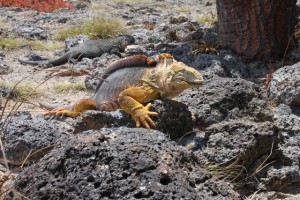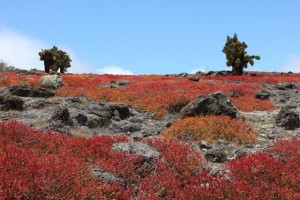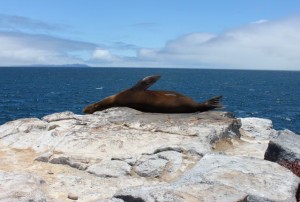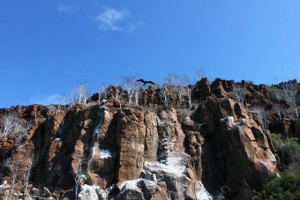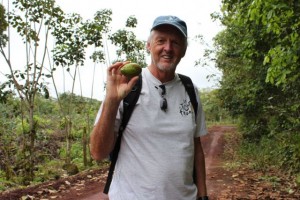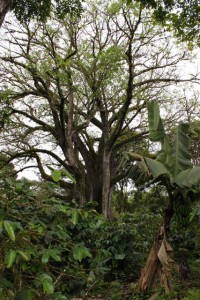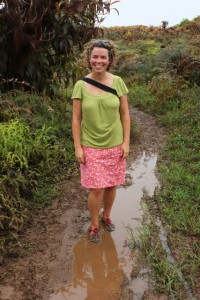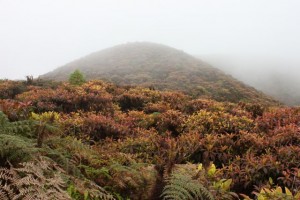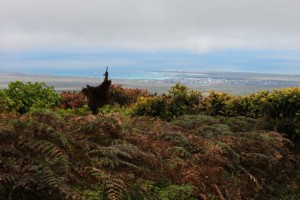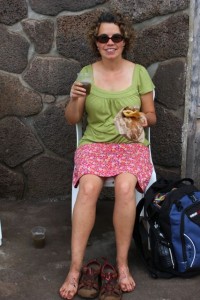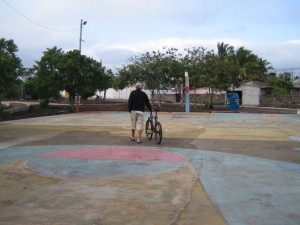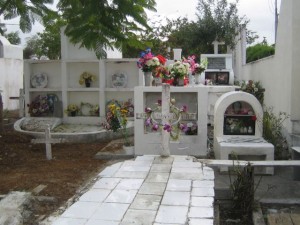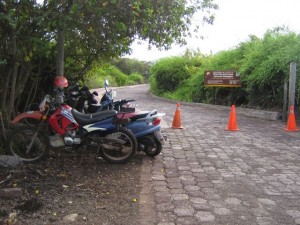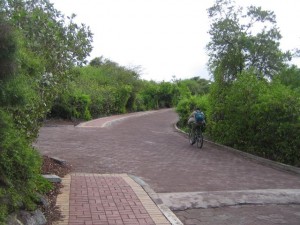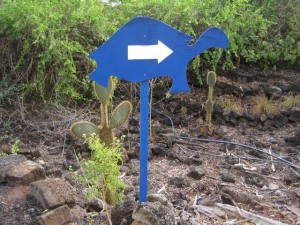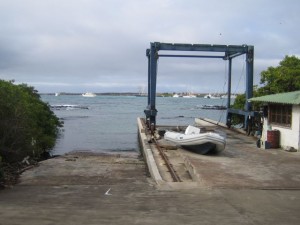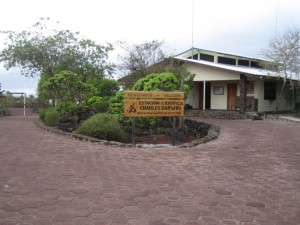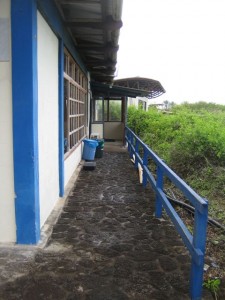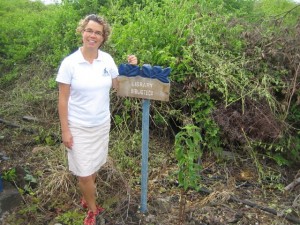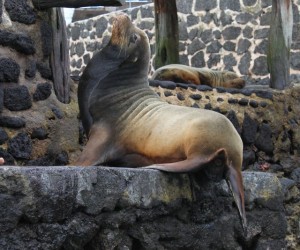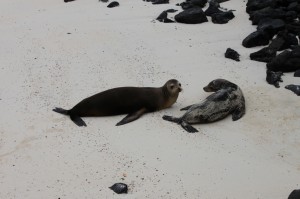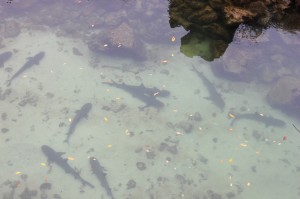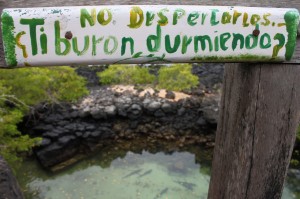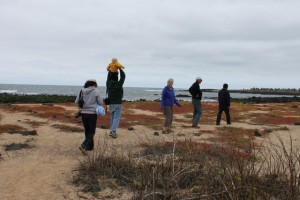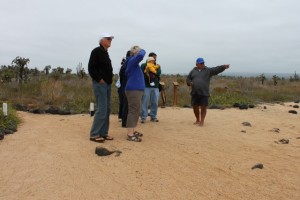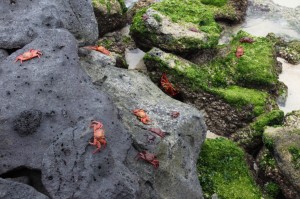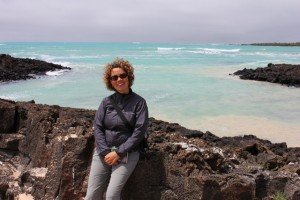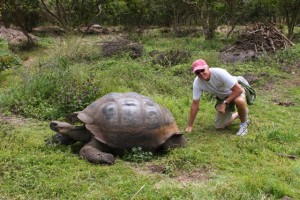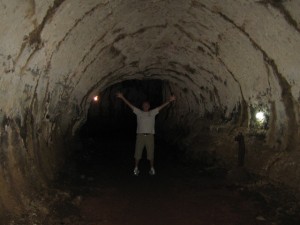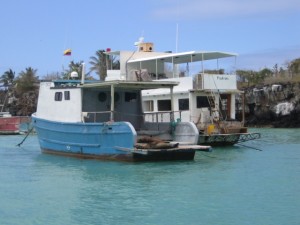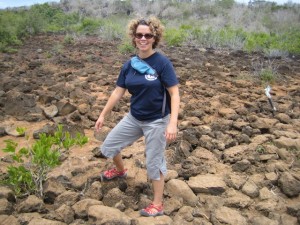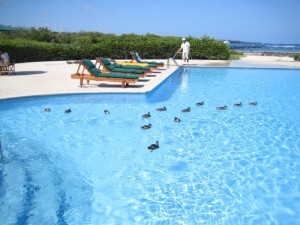Losing a day in Buenos Aires because of our cancelled flight was compensated by the lovely nature and service provided by Ana, our hostess at Giorgio’s B&B. We had door to door cab service to a nicely renovated top floor apartment in a 7-storey building on a busy street in Buenos Aires.
On our first night Ana took us and another couple from New York to a Milonga where we had a tango lesson and a chance to practice this very difficult dance. Tango is in the DNA of the Portenos (people from Buenos Aires) as evidenced by the number of milongas, tango shows, and this how-to diagram on the sidewalk.
The next day happened to be national census day (every 10 years, just our luck), and everything was closed from 8am to 8pm even McDonald’s and Starbucks. With nothing to do, we went to the park where we joined throngs of people enjoying the day off. How could they be counted if they weren’t at home? We wandered around famished until we came across a vendor selling sausages. We were first in line!
We wanted to visit the Casa Rosada (Pink Palace) and see the balcony where Eva Peron delivered her impassioned speeches to her beloved public. When we arrived, we noticed the flag at half mast, and a thin line of people filing past the palace.
All became clear when we saw the banners and discovered that Nestor Kirchner, former Argentine President and husband of current President Cristina Fernandez de Kirchner had died of a heart attack during the night, and Argentina was about to enter three days of official mourning.
Later that day, the long line-ups, flowers and supportive graffiti demonstrated Nestor’s popularity. In contrast, the rise in Argentina’s world credit rating showed that international business felt differently.
There is a lot to see in Buenos Aires, and we could only experience part of it. We admired the Floralis Generica, a large stainless steel sculpture that opens and closes its petals using solar power.
We visited the Recoleta cemetery where tombs resemble mini high-rises and tourists wander through the lanes looking for the Duarte family tomb where Eva Peron currently rests.
We toured the Evita museum that is housed in a former women’s shelter established by Eva Peron. The museum tells her short life story and gives a sympathetic account of her rise to prominence using film, photographs and artifacts, including dresses from her famous wardrobe. This was followed by a lovely lunch in the restaurant attached to the museum.
Buenos Aires has some famous coffee shops. We visited Cafe Tortoni, possibly the oldest in the country and still a favourite of older Portenos even though these days tourists tend to outnumber locals.
We were sad to leave Buenos Aires as we were just feeling at home there. On the other hand, after just two weeks of Argentine Malbec, steak and media lunas (croissants), my waistline was saying it was time to go.
More photos of Buenos Aires from: http://www.flickr.com/photos/sataylor/sets/72157625302943287/



